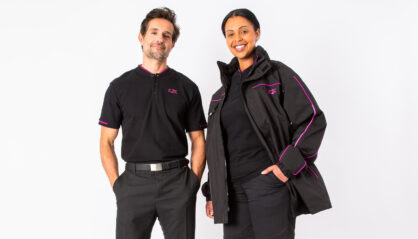Longevity Vs Fast Fashion: The New Cool

Consumers are becoming increasingly aware of climate issues, with the eco-friendly movement instilling an eco-conscious mindset into consumers.
One of the main industries to take its toll on the environment is fashion. But as people’s eco-awareness is rising, we start asking ourselves how can we switch from fast fashion to more sustainable fashion choices?
What’s the difference between fast fast fashion and ‘slow’ fashion?
High-street retailers offer us a continuous range of trendy and affordable garments. Did you know that the fashion production cycle now caters for 52 seasons a year instead of four? Every single week, a new collection is being launched. But how is that impacting the planet?
In order to deliver a new collection every week, brands have to resort to using cheap fabrics, such as acrylic, polyester, polyamide, and nylon. All of these contain plastics called microfibres, which are shed when we wash our clothes. According to a study, the UK alone generates about 4,000 tonnes of plastic microfibre pollution per year. Around 1,600 tonnes of this ends up in our rivers and oceans, jeopardising wildlife.
Another downside of fast fashion is its unethical labour. People working in factories abroad or in the UK are paid low wages that meet the standard requirement on paper, but not in practice. According to Khorshed Alam, executive director of AMRF (Alternative Movement for Resources and Freedom Society), there are about 2.5 million garment workers in Bangladesh who work for more than 12 hours a day and earn no more than about £12 a month.
Then comes slow fashion. In short, it’s a reaction to fast fashion which offers an alternative to the unethical, unsustainable, and unfair processes that comprise fast fashion. Not only that, but it adopts an eco-awareness mindset that advocates buying better-quality and long-lasting garments instead of low-quality and short-lived ones.
Changing consumers’ behaviours
The slow fashion movement gained force in 1985 when an array of high-street brands started implementing sustainable and ethical practices. According to a report by Fixing Fashion’s environmental audit committee (EAC), 59.6% of the surveyed fashion companies were investing more in sustainability in 2019, compared to 2018. 53.7% reported the use of recycled materials in their product, and 42.6% said they have a sustainable range.
The rising consumer eco-consciousness is echoed in the increasing eco-awareness by retailers. A recent study shows that consumers are more likely to purchase sustainable apparel products if they know more about sustainability. As such, the legacy of slow fashion is extending beyond high-street retailers and encompassing other branches of fashion, including shoes, accessories, and workwear clothing.
The COVID-19 pandemic has definitely shed light on eco-friendliness. Amid the state of uncertainty of the fashion industry new consumer behaviours emerged, the main one being anti-consumerism. People are mainly buying essential pieces of clothing are looking for timeless and long-lasting items, which they see as an investment in fashion.
A 2020 research, which surveyed over 2000 UK and German consumers, claims that “engagement in sustainability has deepened during the COVID-19 crisis”. As 88% of the surveyed said they recognise the need to pay more attention to reducing pollution, their consumer behaviours are a reflection of that. Sustainable material is an important purchasing factor for 67% of the respondents, and 63% take notice of the brand’s promotion of sustainability.
The survey also points to the fact that consumers are concerned with how brands treat their staff. In terms of what brands consumers are more likely to support, 75% of the respondents would go for a trusted brand, while millennials and Gen Zs are more likely to experiment with smaller and newer brands.
The rising slow fashion trends have also reached a group of MPs. They are urging the government to invest in the creation of more sustainable fabrics and boost UK textile recycling facilities.
The benefits of slow fashion
So how can you benefit the planet if you opt for more slow fashion choices?
The quality over quantity mindset is at the core of sustainable fashion. This means that you’re investing in durable garments that can last you a long time, if not forever. By contributing to the movement, you are supporting an eco-lifecycle that honours the production of each garment from start to finish and sees the connection between all processes.
A benefit of slow fashion is the reduction of global pollution. This can be done by implementing a sustainable supply chain that covers the sources of the material, as well as the production, dissemination, and end-of-life disposal of products. It also supports ethical and fair trade production by paying living wages to employees and caring for their well-being.
Next time you head to the high street, why not try adopting a greener shopping mindset? There are many slow fashion alternatives that offer quality and longevity while also sustaining the planet and promoting ethical working conditions.





